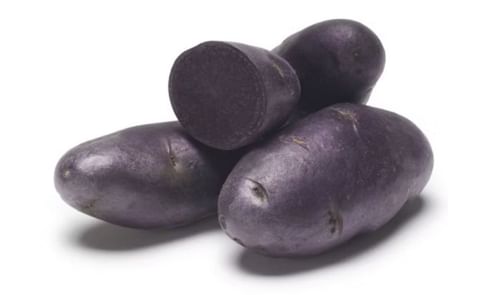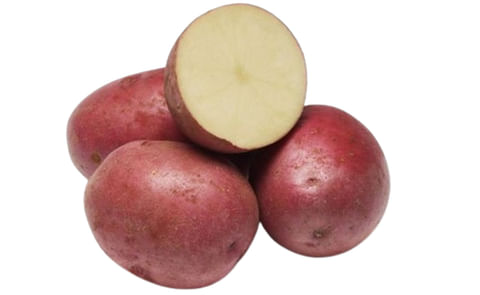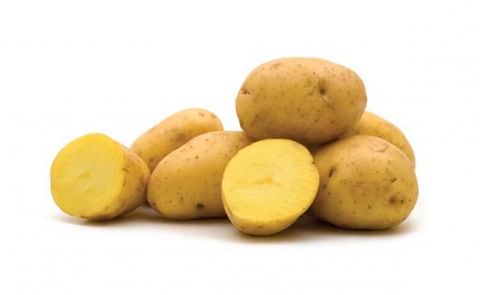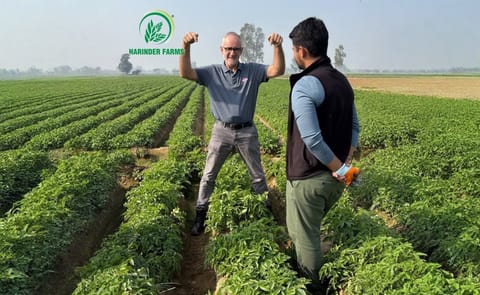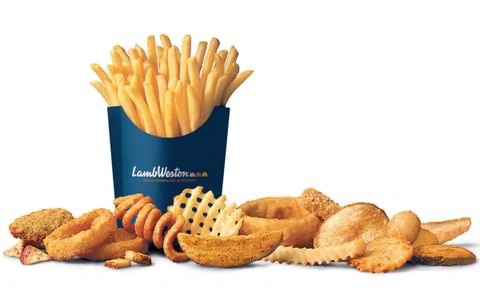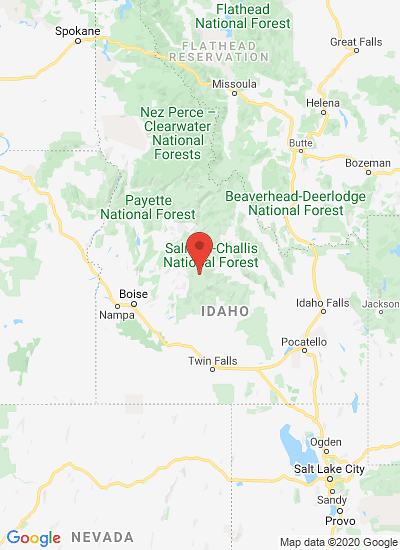University of Idaho Extension
The University of Idaho wants you to have richly colored potatoes, even after storage
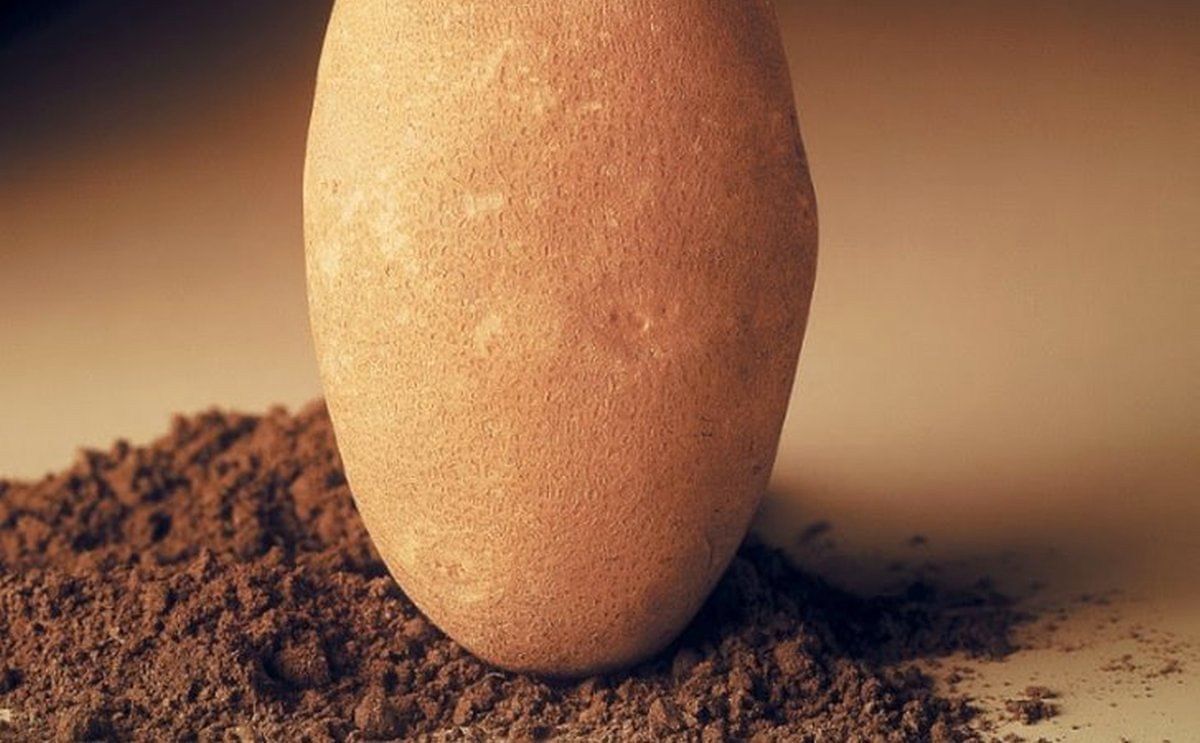
Harvest a red, yellow or purple specialty potato and its skin color will be shiny and bright. That’s paramount, because skin quality drives buyers to put a particular potato in their shopping cart. Store that potato for a month or two, and its skin color will be noticeably duller. It may even have developed unappealing blemishes that prompt consumers to leave it in the store.
 Across southern Idaho this year, University of Idaho agricultural researchers will be investigating the in-season, harvest, storage and packing processes that affect skin color and quality in specialty potatoes. They will examine the potentially positive or negative effects of growth regulators, in-season and post-harvest fungicides, harvest timing, disinfectants and storage conditions. Roy Navarre, a research geneticist with the USDA Agricultural Research Service at Prosser, Wash., will add a nutritional twist—studying the impacts of these factors on the healthful phytonutrients in potato skins.
Across southern Idaho this year, University of Idaho agricultural researchers will be investigating the in-season, harvest, storage and packing processes that affect skin color and quality in specialty potatoes. They will examine the potentially positive or negative effects of growth regulators, in-season and post-harvest fungicides, harvest timing, disinfectants and storage conditions. Roy Navarre, a research geneticist with the USDA Agricultural Research Service at Prosser, Wash., will add a nutritional twist—studying the impacts of these factors on the healthful phytonutrients in potato skins.
Project leader Mike Thornton, a University of Idaho potato physiologist at Parma, expects the results of the multi-year effort to be a comprehensive set of recommendations for skin quality-enhancing practices. “I think we can make some progress with some fairly simple treatments,” he said.
 At Kimberly, colleague Nora Olsen, a University of Idaho Extension potato specialist, will concentrate on the critical, early-storage “wound healing” period when potatoes temporarily need higher humidity and temperatures. She will also evaluate disinfectants and other compounds that are applied as potatoes enter the storage shed or leave the packing shed. Olsen hopes to identify strategies for putting the shine back on the spuds and for keeping appearance-marring diseases and disorders from getting a foothold.
At Kimberly, colleague Nora Olsen, a University of Idaho Extension potato specialist, will concentrate on the critical, early-storage “wound healing” period when potatoes temporarily need higher humidity and temperatures. She will also evaluate disinfectants and other compounds that are applied as potatoes enter the storage shed or leave the packing shed. Olsen hopes to identify strategies for putting the shine back on the spuds and for keeping appearance-marring diseases and disorders from getting a foothold.
“A bright, beautiful color and top-quality appearance are very important to marketing specialty potatoes: they need to catch the buyer’s eye,” said Olsen.
At Aberdeen, potato pathologist Phillip Wharton will address silver scurf—a blemish-producing disease that leaves only a slightly noticeable silvery sheen on thicker-skinned russet potatoes but very evident dry patches on specialty spuds.
And in Prosser, Navarre will tease out the relationships among the various management approaches and the healthfulness and hue of two sizes of potatoes—tiny one- or two-ounce “baby” potatoes harvested in June and a second crop harvested later and larger in August. Previous research has shown that very small, immature and deeply colored specialty potatoes are exceptionally rich in phytonutrients and that these phytonutrients do not decrease after steaming, boiling, baking, microwaving or stir-frying.
“We have two very desirable goals—higher amounts of phytonutrients and an even more visually appealing potato,” Navarre said. “Hand in hand, that’s a very good combination to have.”
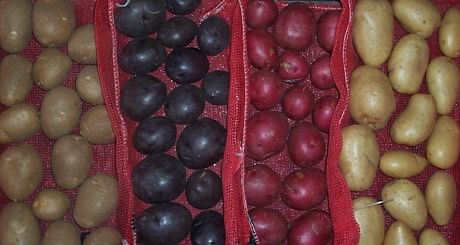 The trial will include Yukon Gem, a white-skinned potato with yellow flesh;All Blue, a purple-skinned potato with purple and white flesh;Red LaSoda, a red-skinned potato with white flesh;Purple Pelisse, a purple-skinned fingerling potato with purple flesh;Bintje, a white-skinned potato with light-yellow flesh, and POR01PG20-12, a red-skinned potato with red and white flesh. Purple Pelisse is a recent release from the Tri-State Potato Variety Development Program, in which the University of Idaho participates.
The trial will include Yukon Gem, a white-skinned potato with yellow flesh;All Blue, a purple-skinned potato with purple and white flesh;Red LaSoda, a red-skinned potato with white flesh;Purple Pelisse, a purple-skinned fingerling potato with purple flesh;Bintje, a white-skinned potato with light-yellow flesh, and POR01PG20-12, a red-skinned potato with red and white flesh. Purple Pelisse is a recent release from the Tri-State Potato Variety Development Program, in which the University of Idaho participates.
The project is funded by both the Idaho Potato Commission and the USDA Agricultural Research Service.

Storage issue with Yukon Gold
Project leader Mike Thornton, a University of Idaho potato physiologist at Parma, expects the results of the multi-year effort to be a comprehensive set of recommendations for skin quality-enhancing practices. “I think we can make some progress with some fairly simple treatments,” he said.

Skin defect purple potato
“A bright, beautiful color and top-quality appearance are very important to marketing specialty potatoes: they need to catch the buyer’s eye,” said Olsen.
At Aberdeen, potato pathologist Phillip Wharton will address silver scurf—a blemish-producing disease that leaves only a slightly noticeable silvery sheen on thicker-skinned russet potatoes but very evident dry patches on specialty spuds.
And in Prosser, Navarre will tease out the relationships among the various management approaches and the healthfulness and hue of two sizes of potatoes—tiny one- or two-ounce “baby” potatoes harvested in June and a second crop harvested later and larger in August. Previous research has shown that very small, immature and deeply colored specialty potatoes are exceptionally rich in phytonutrients and that these phytonutrients do not decrease after steaming, boiling, baking, microwaving or stir-frying.
“We have two very desirable goals—higher amounts of phytonutrients and an even more visually appealing potato,” Navarre said. “Hand in hand, that’s a very good combination to have.”

Specialty varieties
The project is funded by both the Idaho Potato Commission and the USDA Agricultural Research Service.
Like to receive news like this by email? Join and Subscribe!
Get the latest potato industry news straight to your WhatsApp. Join the PotatoPro WhatsApp Community!
精选企业
Potato varieties mentioned
Sponsored Content
Sponsored Content
Sponsored Content
Sponsored Content




